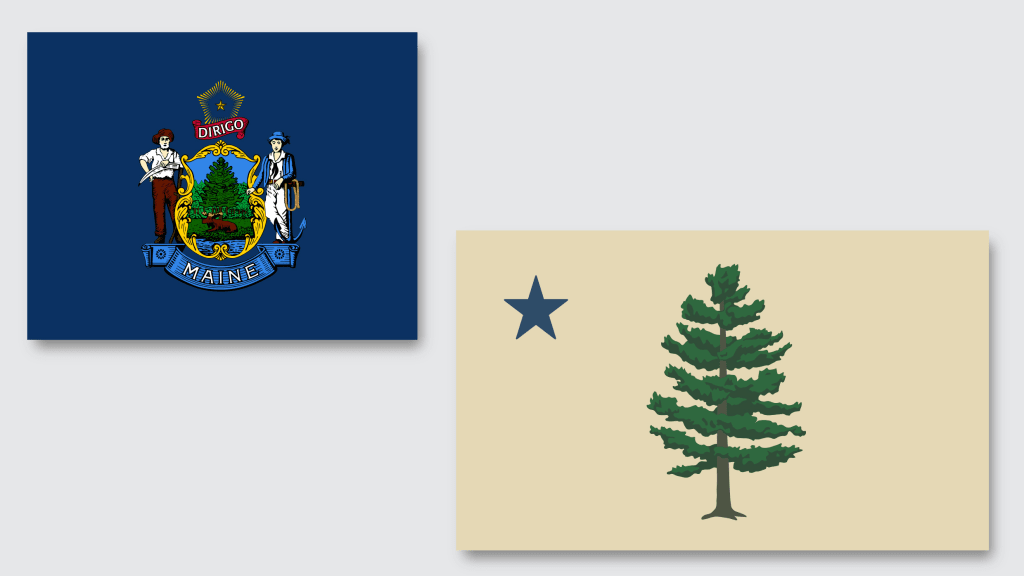When voters in Maine head to the polls in November, they’ll have an important choice to make: whether they should change the design of the state flag.
The proposed redesign by Adam Lemire, a resident of Gardiner, Maine, shows the state’s official tree, the eastern white pine, in the center on a buff field with a navy star in the upper-left corner. It’s his take on a popular state flag design used from 1901 to 1909. Lemire gave the tree 16 branches to represent the state’s 16 counties.
The design was one of 400 submissions Maine’s secretary of state, Shenna Bellows, received. She said in a statement that Lemire’s submission “stood out as a beautiful, faithful representation of an eastern white pine tree proper.” A bipartisan advisory panel selected 10 finalists, and Lemire’s winning design will now head to a yes-or-no vote. If voters approve it, Maine will have a new flag that Bellows says “honors our past and our future.”
But Lemire also didn’t have much room for creative interpretation. Legislation to redesign the flag was strict about what it could look like. The design brief dictated the flag’s background had to be buff, a pine tree had to be in the center, and a five-pointed star had to be in the upper corner.

In 1909 Maine adopted its current flag depicting the state’s coat of arms on a blue field, which is what vexillologists refer to as a “seal on a bedsheet,” to replace its previous pine tree flag. Overly detailed, seal-on-a-bedsheet flags are now falling out of fashion. Today, states are going for designs that are more likely to be used as symbols of popular expression and identity, as with the distinctive flags of states like Arizona and Texas.
Several states have adopted new flags over the past few years. Mississippi introduced a new flag design in 2020, and more recently Minnesota and Utah ditched their old flags for simpler designs. Simple flags better adhere to the best practices from the North American Vexillological Association, though redesigning them isn’t without controversy. Inevitably, efforts to redesign state flags encounter resistance from opponents, including those who view some changes, like the removal of Confederate emblems, as erasing history. A design issue can then become a political one—and thus a symbol meant to unify becomes divisive.
“For symbols like our state flag to have meaning, they must bring people together—they must unite us,” Republican Rick Bennett, a Maine state senator who helped select the winning design, said in a statement.
In Maine, what’s old could soon be new again. By reviving a historic popular symbol that’s better suited for flag design trends today, Maine is sidestepping the potential for any political land mines.